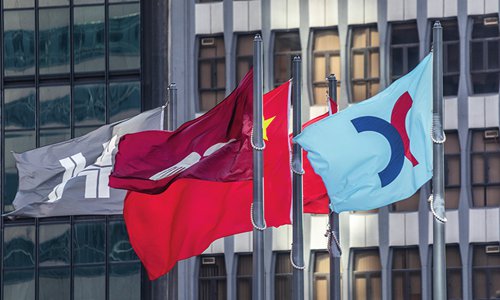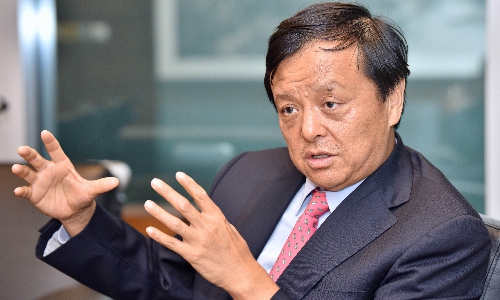SOURCE / MARKETS
HKEX mulls new platform to enhance mainland-HK stock connect program

Flying flags outside the Hong Kong Stock Exchange in Hong Kong in December 2018 Photo: VCG
Hong Kong Exchanges and Clearing (HKEX), operator of the Hong Kong stock market, announced on Tuesday that it plans to introduce Synapse, an integrated settlement acceleration platform underpinning growth of global investor access and participation in China's mainland equity market through the stock connect program.
By leveraging DAML smart contract technology, the Synapse will standardize and streamline post-trading flows of northbound stock connects, by maximizing efficiencies for market participants in a transparent, secure and reliable manner, according to HKEX.
Expected to be rolled out in the first quarter of 2022, the service will be owned and operated by a newly established company that is a wholly owned subsidiary of HKEX.
The announcement came amid an increase in post-trading complexities and the growth of international investors' participation in the mainland's equity market. Data from the HKEX showed that Hong Kong and international investors' holding of Shanghai and Shenzhen stock exchange A-shares rose to 2.1 trillion yuan ($320 billion), compared to only 86.5 billion yuan at the end of 2014, shortly after the launch of the mechanism.
By November 10, the total turnover of northbound trading reached 36.9 trillion yuan, with a net inflow of 1.12 trillion yuan.
Hong Kong Special Administrative Region Chief Executive Carrie Lam is scheduled to give her policy address for 2020 on Wednesday to chart the direction of the city's economic, social and political development, with speculation arising that expanding the investment scope of the stock connect program would be involved.
HKEX said that it has no comment on market speculation. "Enhancements to the stock connect program are ongoing, such as the broadening of its investment scope. HKEX will continue to work with mainland partners and regulators to bring more opportunities to investors and companies, connecting China, connecting the world," the HKEX told the Global Times on Tuesday.
Shanghai-Hong Kong stock connect was launched on November 17 2014, while the Shenzhen-Hong Kong stock connect was launched on December 5 2016, giving mainland and international investors direct access to each other's markets from their home market for the very first time.
Trading under the stock connect program is subject to a daily quota, which limits the maximum net buy value of cross-boundary trades. The daily quota on northbound trade was initially set at 13 billion yuan and was increased to 52 billion yuan in 2018, for each of the Shanghai-Hong Kong and Shenzhen-Hong Kong trade links.
"Broadening and even lifting the investment scope will become a trend, especially given the growing enthusiasm from foreign capital in the mainland market at the moment, attracted by the resilience of the Chinese economy and its huge growth potential," Dong Shaopeng, a senior research fellow at the Chongyang Institute for Financial Studies of Renmin University of China, told the Global Times on Tuesday.
To accommodate growing foreign investment, the country is expected to deepen the market-oriented yuan exchange rate reform to make it more fully convertible, Dong added.

